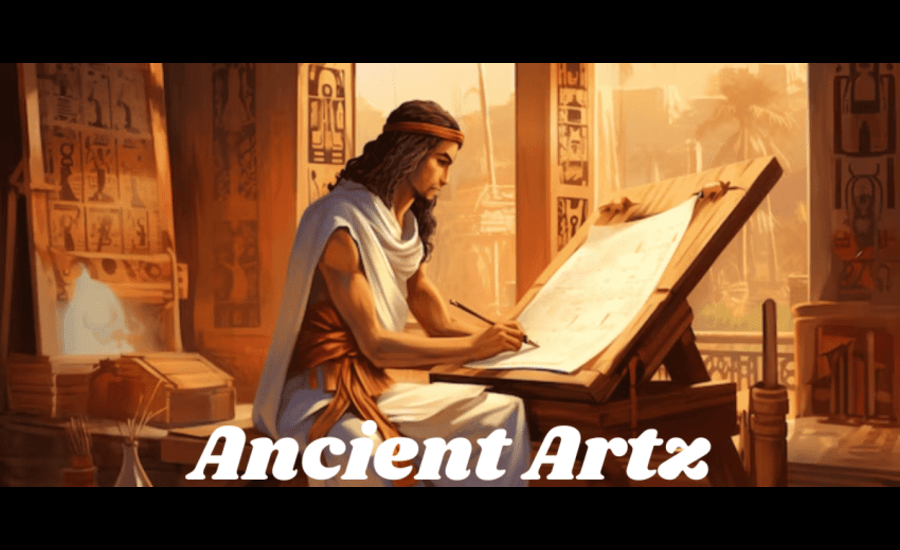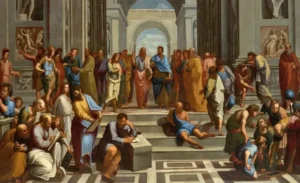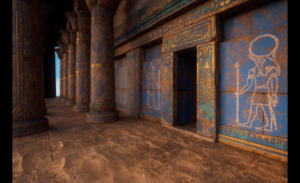Blog
Ancient Artz Culture, History, and Creativity

The Ancient Artz culture, a civilization that flourished long before the rise of known historical powers, represents a key chapter in the development of human creativity and culture. Over the centuries, much about this fascinating civilization has been lost to time, but modern scholars, archeologists, and anthropologists have unearthed valuable fragments that shed light on their history and artistic expression. This article explores the history, cultural significance, and creativity that defined the Ancient Artz, highlighting their enduring legacy in shaping artistic traditions that still resonate today.
The Origins and Early Beginnings of the Ancient Artz Culture
The precise origins of the Ancient Artz culture remain a subject of scholarly debate. Some believe that the civilization emerged around 3000 BCE, while others speculate that its roots go much further back in time. What is clear is that the Artz people were among the first to demonstrate a sophisticated understanding of art, nature, and the human condition. They left behind a rich tapestry of cultural achievements, from architectural marvels to intricate pottery, that continues to captivate researchers.
The Artz civilization flourished in a region that was once characterized by lush landscapes and vast river systems. These natural resources played a vital role in shaping the culture of the people, as they incorporated the land and its offerings into their art, rituals, and daily life. Their early artworks—mostly in the form of carvings, pottery, and textiles—offered a glimpse into their worldview, often blending elements of nature with mythological themes.

The Rise of Artz Art and Architecture
One of the defining features of the Ancient Artz culture is its remarkable approach to art and architecture. The Artz were known for their grandiose structures, which served as both functional spaces and cultural symbols. One of the most iconic examples of Artz architecture is their monumental temples and ziggurats, which were designed not only to serve as places of worship but also as physical representations of their cosmological beliefs. These structures were often adorned with stunning sculptures and intricate carvings that depicted various deities, mythical creatures, and celestial bodies.
Beyond their monumental architecture, the Artz people also excelled in creating art that captured the essence of their daily lives and spiritual practices. One of the most significant artistic developments during this period was the Artz pottery. Their pottery was distinguished by its elaborate designs and symbolism. Each piece often told a story or represented a particular deity, with many featuring intricate geometric patterns or stylized depictions of animals and plants. These works of art were not merely decorative but held deep cultural and spiritual significance for the Artz people, serving as vessels for ritualistic purposes, as well as functional objects for daily life.
The Influence of Nature on Artz Creativity
Nature played a central role in the creative output of the Artz civilization. Much of their art and architecture was inspired by the natural world, and the people themselves viewed nature as a source of divine power and guidance. The Artz people had a deep reverence for the earth, the elements, and the creatures that inhabited their environment, and these reverential themes permeated their art.
Animal symbolism was particularly prominent in Artz artwork, with many depictions of mythical creatures and gods featuring animals in prominent roles. For instance, serpents, jaguars, and birds often appeared in their art, representing different aspects of the natural world such as strength, wisdom, and freedom. Some scholars even argue that these creatures held spiritual significance for the Artz, serving as intermediaries between the human realm and the divine.
The use of plant motifs in Artz art is another reflection of their connection to nature. Many of their sculptures and paintings feature depictions of plants, flowers, and trees, which symbolized the cycles of life, growth, and death. The Artz were deeply attuned to the seasons and the rhythms of nature, and this understanding was reflected in their art. Their works often depicted the changing of seasons, harvests, and the ever-present relationship between humans and the natural world.

Artz Social Structure and Cultural Expression
The society of the Ancient Artz was highly structured, with distinct classes, roles, and responsibilities that were reflected in their art and cultural practices. The ruling elite, priests, and religious leaders held significant power, while artisans, farmers, and laborers contributed to the broader cultural fabric of the civilization. Social status was often reflected in the art produced, with the most intricate and elaborate artworks reserved for the upper echelons of society.
Artisans, however, played a crucial role in maintaining and advancing Artz culture. They were not only skilled in crafting pottery, textiles, and tools but were also revered as cultural custodians who passed down their artistic knowledge through generations. It is through their efforts that much of what is known about Artz culture has survived. The materials used in Artz artwork were often of high quality, with the civilization’s artisans demonstrating great skill in the manipulation of materials such as clay, stone, and precious metals.
The Artz people also had a rich tradition of storytelling, which was closely tied to their artistic expressions. Their art often depicted scenes from mythological narratives, religious rituals, and historical events. These stories were passed down through oral tradition and were frequently accompanied by visual representations that helped to immortalize key figures and moments in Artz history.
The Decline of the Ancient Artz Civilization
Despite its many achievements, the Ancient Artz civilization eventually experienced a period of decline. Several factors contributed to the fall of the Artz, including environmental changes, invasions from neighboring cultures, and internal societal upheaval. The once-thriving urban centers of the Artz slowly began to fall into disrepair, and many of their artistic traditions were lost or forgotten in the wake of their decline.
The disappearance of the Ancient Artz civilization left behind a wealth of artifacts and architectural remains that continue to intrigue modern scholars. The mystery surrounding their ultimate downfall only adds to the allure of the Artz culture. What remains clear, however, is that the Artz made significant contributions to the fields of art, architecture, and culture, and their legacy lives on through the works they left behind.
The Legacy of the Artz Culture: Influence on Modern Art
The influence of the Ancient Artz culture can still be seen in modern art and architecture. Many contemporary artists and designers draw inspiration from the intricate designs and symbolic motifs found in Artz pottery and architecture. The Artz’ deep connection to nature, the divine, and the human experience continues to resonate with those who seek to create art that reflects these universal themes.
Moreover, the Artz culture has had a lasting impact on the study of ancient civilizations and the role of art in shaping society. Archaeological discoveries related to the Artz have expanded our understanding of how art can function as both a means of personal expression and a tool for societal cohesion. The artistic traditions of the Artz continue to serve as a reminder of the profound role that creativity plays in human history.
Key Contributions of the Artz Civilization
- Architectural Innovations: The grand scale and spiritual significance of Artz temples, ziggurats, and other structures continue to inspire architects and historians.
- Pottery and Textiles: The intricate designs and symbolic elements in Artz pottery and textiles serve as valuable insights into the culture’s beliefs and daily life.
- Nature-Based Symbolism: The Artz people’s use of animal and plant motifs in their art reflects their deep connection to the environment and spiritual beliefs.

The Unraveling Mysteries and New Discoveries
Though much about the Ancient Artz remains shrouded in mystery, new discoveries continue to be made that deepen our understanding of this remarkable civilization. Archaeological digs in the regions once inhabited by the Artz have uncovered new evidence of their artistic, social, and religious practices. Additionally, modern technology, such as ground-penetrating radar and 3D imaging, has enabled researchers to explore previously inaccessible sites, offering new insights into Artz settlements and their cultural heritage.
Future research will undoubtedly continue to shed light on the richness of the Artz culture, potentially leading to the discovery of forgotten artistic masterpieces, hidden temples, and long-lost narratives. As technology advances, so too does our ability to connect with the past and unravel the complexities of civilizations like the Ancient Artz.
Conclusion
The Ancient Artz culture, with its emphasis on creativity, spirituality, and a deep connection to the natural world, remains one of the most fascinating and influential ancient civilizations. Their art and architecture not only tell the story of a people who understood the power of symbolism and beauty but also continue to inspire modern artistic movements and cultural exploration. While much of the Artz civilization has faded into the annals of history, its legacy lives on through the remarkable works of art and architecture that they left behind, reminding us of the enduring power of human creativity.
FAQs:
What was the Ancient Artz culture known for?
The Ancient Artz culture was renowned for its remarkable contributions to art, architecture, and spirituality. They excelled in creating intricate pottery, stunning temples, and ziggurats, many of which were adorned with detailed carvings and sculptures. Their art was deeply symbolic, often incorporating nature and mythological themes. The Artz people were also known for their advanced understanding of the natural world, which played a central role in their creative expressions.
Where did the Ancient Artz civilization flourish?
The Ancient Artz civilization thrived in a region that was once lush and rich with river systems. While the exact geographic location remains uncertain, some researchers suggest it was located in what is now considered a fertile area with abundant natural resources, which helped shape their culture and artistic output.
What were some of the most important architectural contributions of the Ancient Artz?
One of the most significant architectural contributions of the Artz people was their monumental temples and ziggurats. These structures were not just places of worship, but also representations of their cosmological beliefs. The Artz also demonstrated great skill in designing grand structures with intricate carvings and sculptures that depicted deities, celestial bodies, and animals.
How did nature influence Ancient Artz creativity?
Nature played a crucial role in the creativity of the Ancient Artz people. They viewed nature as a divine force and incorporated elements like animals, plants, and celestial bodies into their art. Many of their artworks depicted animals such as serpents, jaguars, and birds, which were symbolic of various qualities like strength, wisdom, and freedom. They also used plant motifs in their designs, representing themes of life, growth, and the cycles of nature.
What role did social structure play in Artz art?
The social structure of the Ancient Artz society influenced their artistic output. The ruling elite and priests held significant power, and their status was often reflected in the art they commissioned. Many of the most elaborate artworks were reserved for the upper classes, while artisans and craftsmen created functional yet beautiful objects for daily life. Artisans were highly respected, as they preserved and passed down the artistic traditions of the Artz.
What happened to the Ancient Artz civilization?
The decline of the Ancient Artz civilization is attributed to a combination of factors, including environmental changes, invasions by neighboring cultures, and internal societal upheaval. As the once-thriving cities began to deteriorate, many of the Artz’s artistic traditions and cultural practices were lost or forgotten. However, their legacy lives on through the artifacts and remains that continue to be discovered.
-

 Fashion10 months ago
Fashion10 months agoLiteroticaTags Explained: Find And Use The Top Tags For 2025
-

 BUSINESS11 months ago
BUSINESS11 months agoWhat is NippyDrive? A Complete Guide to Using NippyDrive
-

 Biography10 months ago
Biography10 months agoCoco Lovelock Bio, Age, Career, Net Worth, Height, Education, Boyfriend & More
-

 Biography10 months ago
Biography10 months agoWho Is Meow Miu? Get to Know the Latest Star in the Spotlight
-

 Fashion10 months ago
Fashion10 months agoWebfreen.com Fashion: Redefining Affordable Luxury
-

 Home Improvement10 months ago
Home Improvement10 months agoValvula Check 32mm Sodimac: Comprehensive Guide
-

 BUSINESS8 months ago
BUSINESS8 months ago9 Packaging Trends You Can’t Afford to Ignore in 2025
-

 TECHNOLOGY8 months ago
TECHNOLOGY8 months agoTransform Text into Stunning Videos: Free Online AI Text-to-Video Generator
